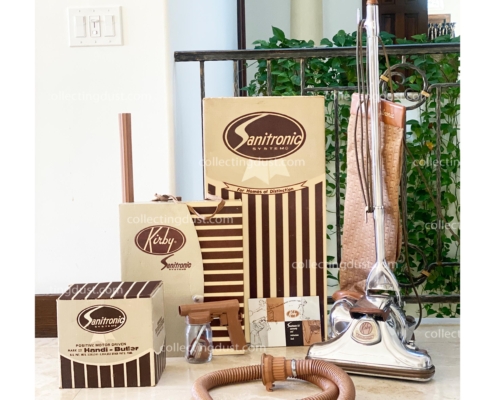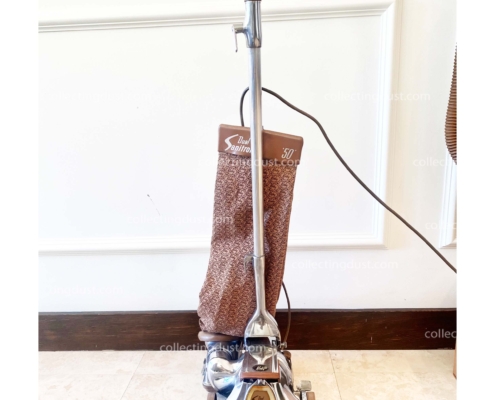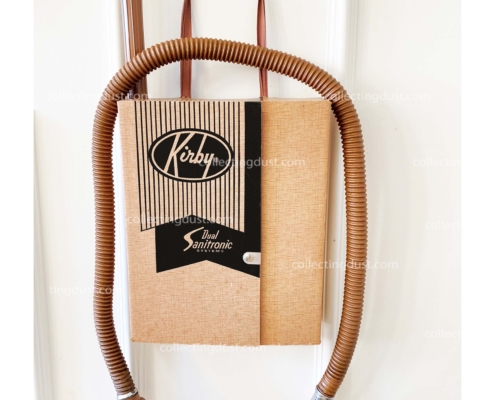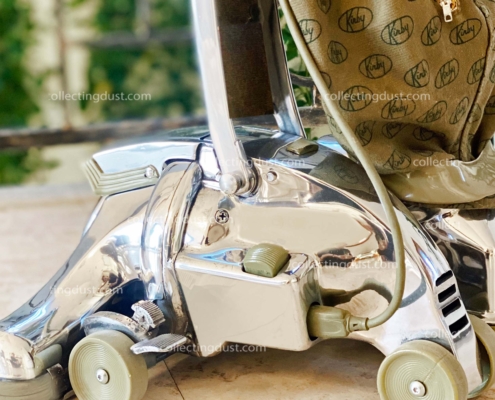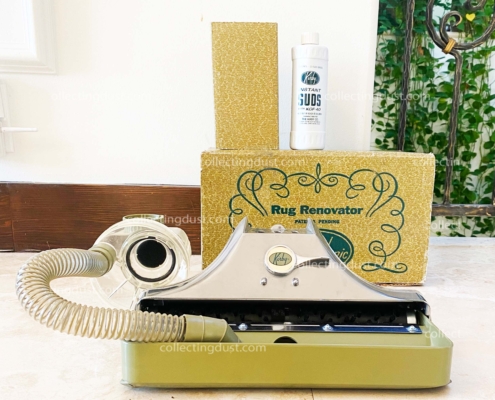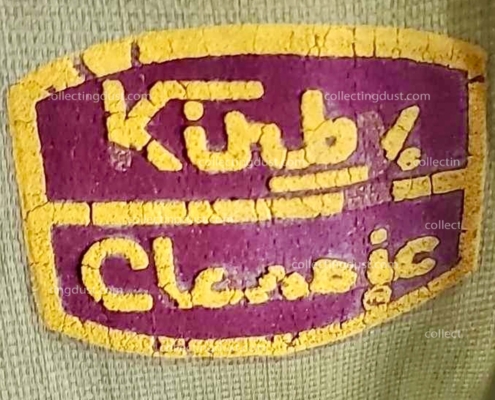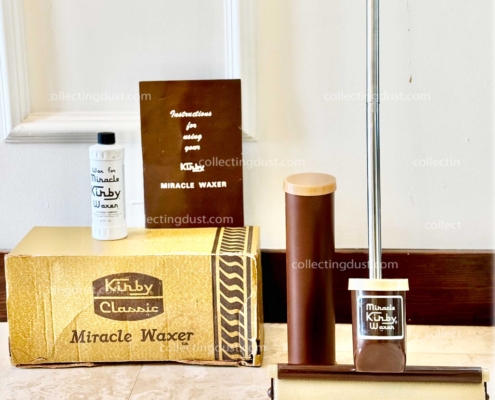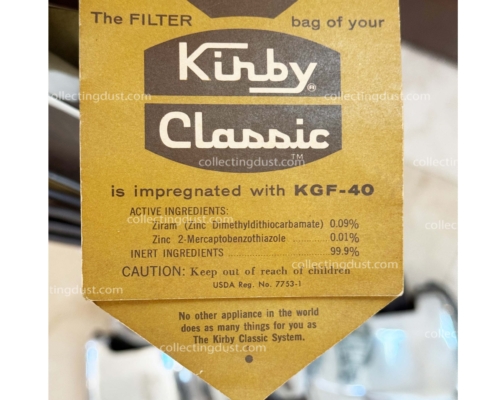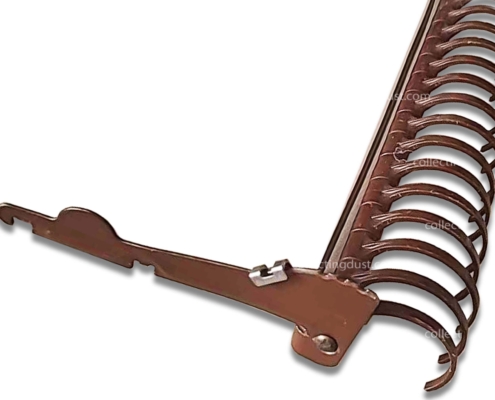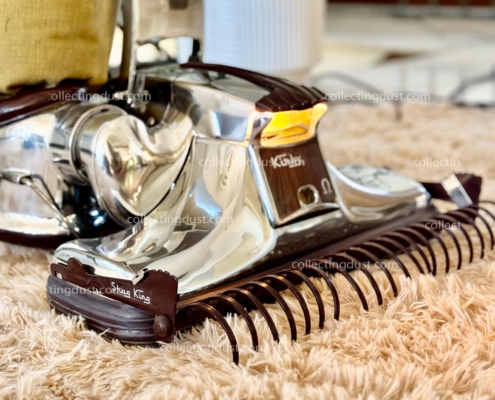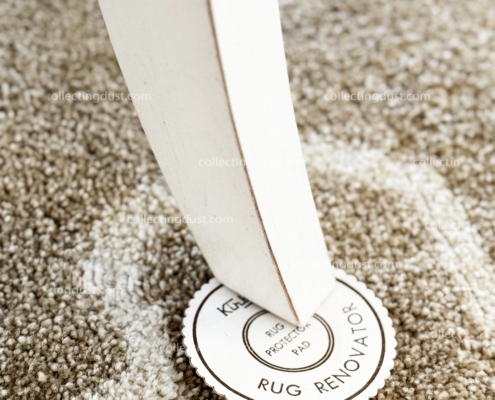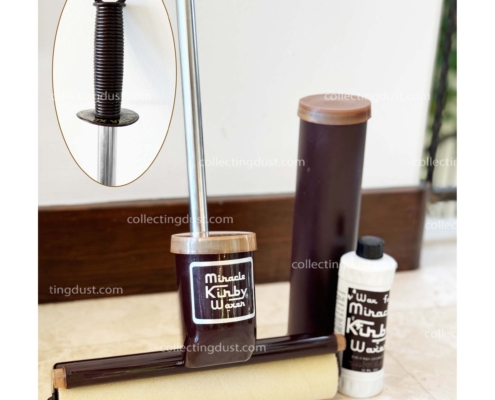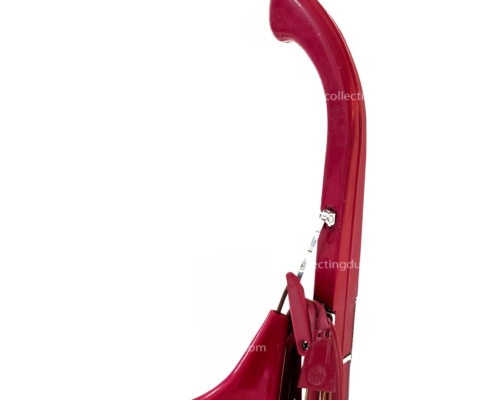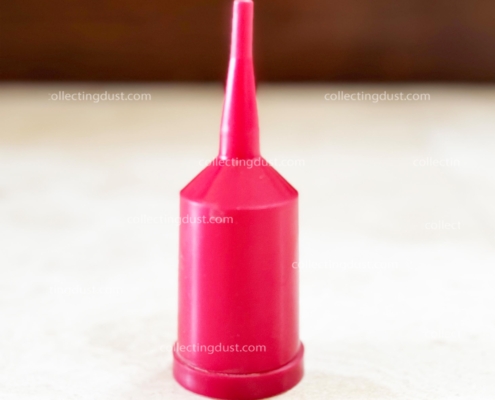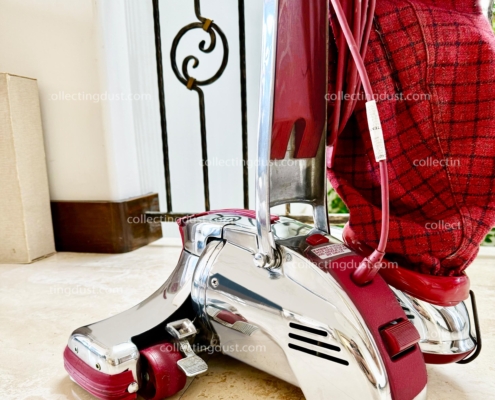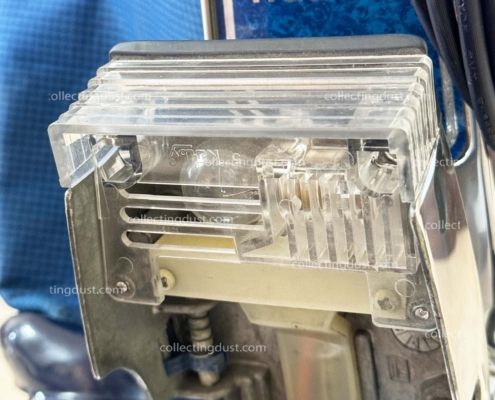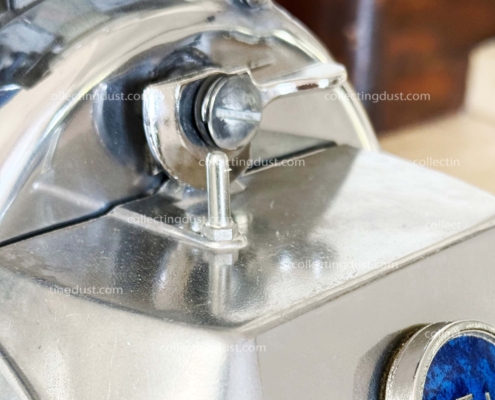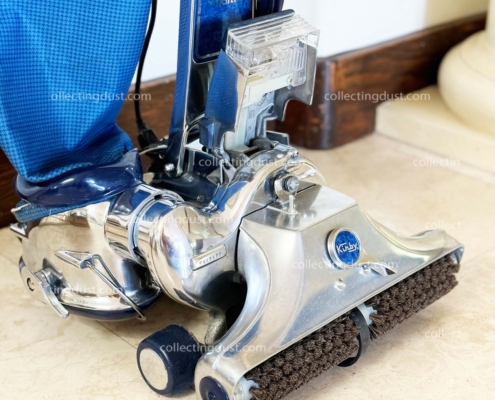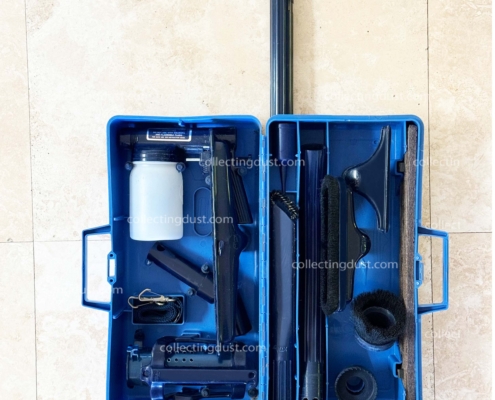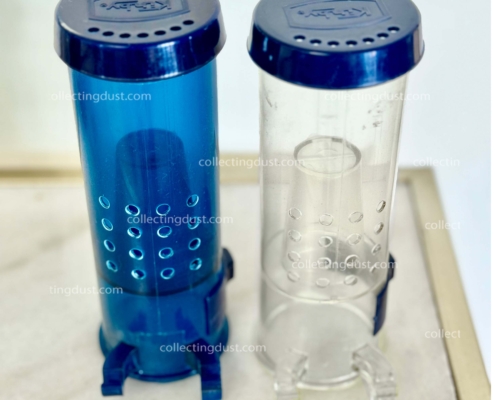The most significant difference between the Omega and the Classic III is the TCV (Triple Cushion Vibration) cleaning head. In terms of construction, the belt lifter transitioned from cast aluminum to plastic. Additionally, the Classic III introduced a “visual belt” window, eliminating the confusing lettering indicating whether the belt was on or off. The hinged rug plate, which was absent in the Omega, made a comeback. In the Omega, the rug plate could be put on backwards, causing the belt to ride over the bristled part of the brush roll. To address this issue, the rug plate in the Classic III had the word “FRONT” engraved into it. However, this engraving didn’t last long when used on hard floors frequently with the cleaning head. The thread guards on the brush roll were also improved. the Classic III had smaller end caps and a lower, wider profile thread guard.
The Shag King attachment was enhanced in the Classic III. It now had locks to secure it to the cleaning head, rather than just being snapped on. The Classic III featured a handle grip made of solid plastic. However, the first design was uncomfortable to maneuver, so they reverted to the old design but made it solid instead of hollow shortly after the first year.
Additionally, the Classic III had a thin handle fork, and the metal would fatigue and break down where the pin goes through.
The bag top on the Omega had a hook coming from the center, similar to previous models, but without a chain. Instead, a formed wire was used, which didn’t swing to the right as easily as in previous models. To rectify this, a formed wire permanently angled to the side was implemented in the Classic III to keep the bag at the proper angle. Apart from these changes, the machines were essentially the same, except for variations in color and some cosmetic alterations.
The Kirby Classic III was the first model to introduce the jigsaw with the Handi-Butler message attachment, which was later discontinued. The Omega was also the last machine to have a cast aluminum Handi Butler housing, while the Classic III had a plastic one. The bag material on the Classic III had a different texture, resembling felt.
In later models of the Classic III, a new and improved “left side” cord hook design was introduced, surpassing the earlier Classic III and Omega models. The bag material in these later models was also stiffer compared to the Omega.
The motor, light, and power switches were identical in both the Omega and Classic III. Both the Omega and Classic III had thin fan cases, which could potentially develop holes if a rock was sucked up. Attachments offered in both models were mostly the same, although the Classic III introduced the jigsaw. Its worth noting that the initial Jigsaw attachment was painted red and later was made in plain black .
Shipper carton and boxes were in either a flat white or light metallic silver woven design against an off white background with the text in rich ruby red. caddy was now renamed “Attachments” reverting to the same title that was used with model 562 . The inflator deflator attachment was introduced.
Handi-Butler is now designated MARK V
Serial number designation:
A= July – December 1976
B= January – July 1977
C= July – December 1977
D= January 1978 – August 1978
E= September 1978 – June 1979

